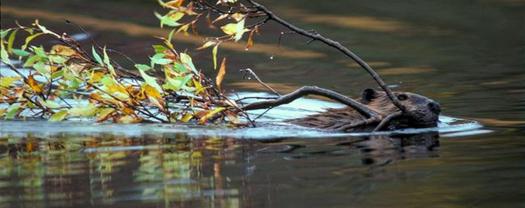SEATTLE – Sometimes moving to a new neighborhood is the best choice for everyone. That’s the theory behind a research project by the Tulalip Tribes of Washington to relocate beaver families. The critters have become a nuisance in the lowlands but in higher elevations, their hard work can benefit the entire Snohomish watershed.
Ben Dittbrenner is a graduate student of University of Washington Environmental and Forestry Sciences and he’s working with the Tribes to trap and move beavers and study the effects of their dam-building. When less snow is predicted with a changing climate, he says a beaver dam is just the right type of eco-friendly barrier to moderate spring runoff.
“It will just flow right down to Puget Sound and it won’t stay in the system for more than a couple days,” says Dittbrenner. “But if we can trap it high up in the watershed, we can keep it there for months and hopefully continue to keep those systems healthier for a longer period of time.”
This will be the second year for the project. Dittbrenner says one family’s big dam in the pond that is its new home has raised the water level by four feet.
Jason Schilling, the Tribes’ wildlife biologist, says beaver dams are engineering marvels, holding back sediment and creating more complex stream systems and good habitat for fish feeding and spawning. In this part of Washington, he says that’s especially important.
“The Snohomish ecosystem is the second-largest salmon-producing system in Puget Sound and there are some limiting factors for salmon production, the biggest ones are water temperature and sedimentation,” says Schilling. “It just so happens that beavers are very good at fixing those problems.”
Relocation starts again in June. The goal is to trap and move at least ten families. Schilling explains beavers tend to stick together as family units and are more likely to settle into an area and get to work if they arrive together.
The project is one of 22 conservation projects across the country, among 13 Native American Tribes, to receive grant funding from the U.S. Fish and Wildlife Service.

